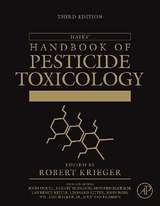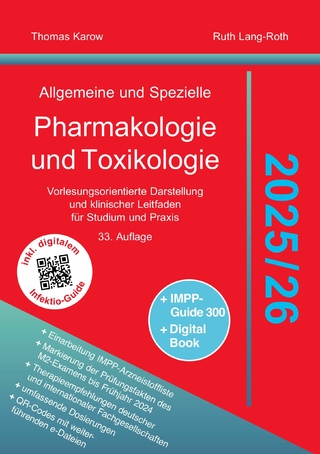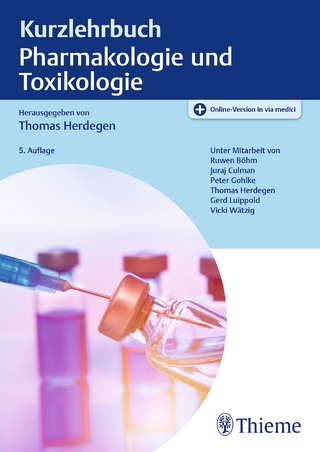
Handbook of Pesticide Toxicology
Academic Press Inc (Verlag)
978-0-12-426260-7 (ISBN)
- Titel erscheint in neuer Auflage
- Artikel merken
This revision of the highly acclaimed Hayes' "Handbook of Pesticide Toxicology" is an in-depth, scientific sourcebook concerning use, properties, effects, and regulation of pesticides. This edition is a comprehensive examination by international experts from academia, government research, and the private sector of critical issues related to the need, use, and nature of chemicals used in modern pest management. This two-volume set contains up-to-date information on a broad range of topics which establishes context of pesticide use and outlines how they are scientifically evaluated. Experts from a variety of disciplines contribute to this work. Some provide a fresh look at existing information, and others look ahead at issues that are central to understanding pesticide use and toxicology in modern integrated pest management. It establishes and describes a context for evaluation of pesticide use in agriculture, residential pest control and public health. It includes important discussion of strategies for pesticide risk assessment. All major classes of pesticide are considered. Different routes of exposure are critically evaluated. Current regulatory issues are defined.
Emerging issues concern topics of special relevance in the future. Agents are reviewed by experts from academia, government research, and the private sector.
Preface. Foreword. Dose (Dosage and Other Factors Influencing Toxicity. Chemistry of Pesticides. Pest Control Agents from Natural Products. Public Health Pesticides. Lawn and Turf: Management and Environmental Issues of Turfgrass Pesticides. Insecticides and Their Use in Urban Structural Pest Control. Verterbrate Pest Control Chemicals and Their Use in Urban and Rural Envrionments. Pesticide Use in Veterinary Medicine. Pesticide Use Practices in Integrated Pest Management. Toxicity Testing. Regulatory Evaluation of the Skin Effects of Pesticides. Neurophysiological Effect of Insecticides. Ecotoxicological Risk Assessment of Pesticides in the Environment. Developmental and Reproductive Toxicology of Pesticides. Worker Exposure: Methods and Techniques. Residential Exposure Assessment: An Overview. Modeling Dietary Exposure with Special Secitons on Meodeling Aggregate and Cumulative Exposure. Greenhouse and Mushroom House ExposureCoping with Aggregate Pesticide Exposure Assessment: An Integration Approach. Occupational Exposure Data Bases/Models for Pesticides. Factors that Affect Pesticide Metabolism and Toxicity. Pesticide Disposition Dermal Absorption. Metabolism of Pesticides. Absorption, Distribution, and Pharmacokinetics. Pesticide Excretion. Diagnosis and Treatment of Poisoning Due to Pesticides. Surveillance of Pesticide-Related Illness and Injury in Humans. Environmental Transport and Fate. Hydrophobicity as a Key Physicochemical Parameter of Environmental Toxociology of Pesticides. Modern Approaches to Analysis of Pesticide Residues in Foods and the Environment. Risk Assessment and Risk Management: The Regulatory Process. Risk Assessment for Acute Exposure to Pesticides. Risk Assessment for Chronic Exposure to Pesticides: The Triazine Herbicide Cyanazine. Pesticides as Endocrine-Disrupting Chemicals. Genetic Toxicity of Pesticides. Immunotoxicity of Pesticides. Sensitive Population Groups. Pesticide Residues in Food and Cancer Risk: A Critical Analysis. Perceptions of Pesticides as Risks to Human Health. Mammalian Toxicity of Microbial Pest Control Agents. The Influence of Age on Pesticide Toxicity. Emerging Issues: Children's Exposure to Pesticides in Residential Settings. Pesticide Percutaneous Absorption and Decontamination. Chemistry of Organophosphorus Insectides. The Metabolism of Organophosphorus Insecticides. Organophosphate Pharmacokinetics. Neuropathy Target Esterase. Cholinesterases. Organophosphorus-Induced Delayed Neuropathy. Understanding the Toxic Actions of Organophosphates. Clinical Toxicology of Anticholinesterase Agents in Humans. Carbomate Insecticides. Aldicarb: Current Science-Based Approaches in Risk Assessment. Imidacloprid A Neonicotinoid Insecticide Interactions with the gamma-Aminobytyric Acid A-Receptor Polychlorocycloalkanes and Recent Congeners. The Avermectins: Insecticidal and Antiparasitic Agents. Inhibitors and Uncouplers of Mitochondrial Oxidative Phosphorylation. Pyrethroid Chemistry and Metabolism. Pyrethroid Insecticides: Mechanisms of Toxicity, Systemic Poisoning Syndromes, Parathesia, and Therapy. DDT and its Analogs. Inorganic and Organometal Pesticides. Boric Acid and Inorganic Borate Pesticides. Deet. The Safety Assessment of Piperonyl Butoxide. Pentachlorophenol. Symmetrical and Asymmetrical Triazine Herbicides. Phenylurea Herbicides. Protoporphyrinogen Oxidase Inhibitors. Chloracetanilides. Paraquat. Diquat. Phenoxy Herbicides. Dicamba. Imidazolinones. Toxicology of Triazolopyrimidine Herbicides. Inhibitors of Aromatic Acid Biosynthesis. Fungicides. Cyprodinil. Captan and Folpet. Chlorothalonil. Dialkyldithiocarbamates. A Toxicological Assessment of Sulfur as a Pesticide. Rodenticides. Methyl Bromide. Dichloropropene. Phosphine. Metam-Sodium. Sulfuryl Fluoride.
| Erscheint lt. Verlag | 17.10.2001 |
|---|---|
| Zusatzinfo | Illustrations |
| Verlagsort | San Diego |
| Sprache | englisch |
| Maße | 216 x 279 mm |
| Gewicht | 5290 g |
| Themenwelt | Studium ► 2. Studienabschnitt (Klinik) ► Pharmakologie / Toxikologie |
| Naturwissenschaften ► Biologie ► Biochemie | |
| Weitere Fachgebiete ► Land- / Forstwirtschaft / Fischerei | |
| ISBN-10 | 0-12-426260-0 / 0124262600 |
| ISBN-13 | 978-0-12-426260-7 / 9780124262607 |
| Zustand | Neuware |
| Haben Sie eine Frage zum Produkt? |
aus dem Bereich



